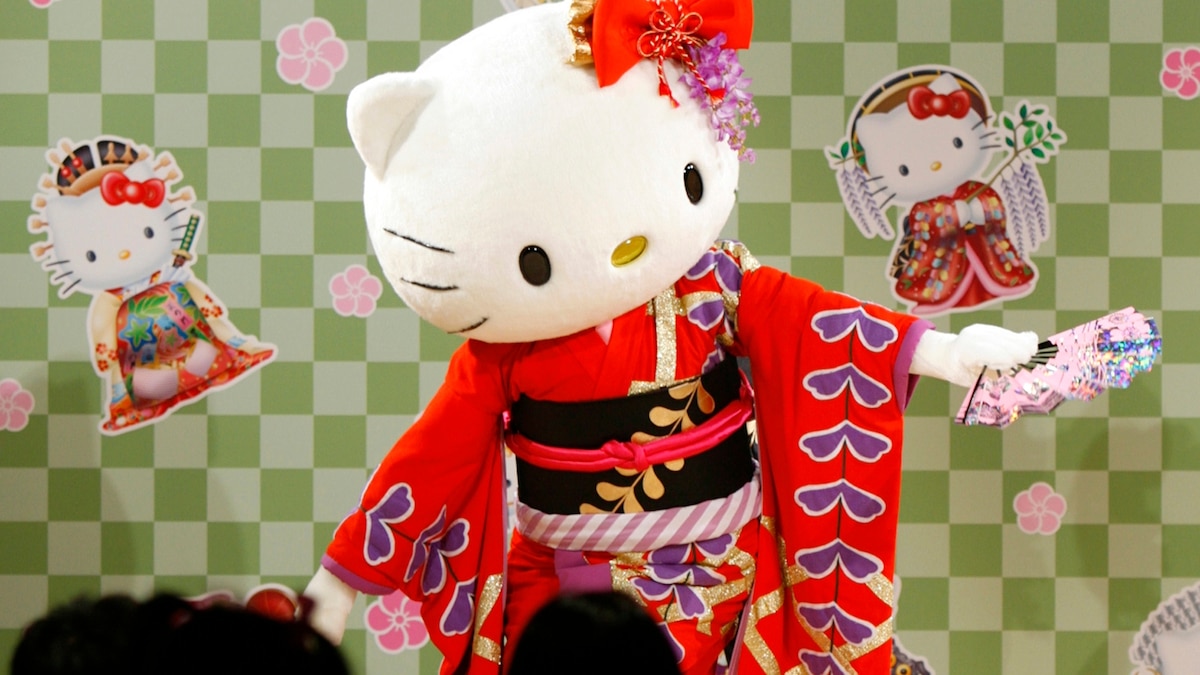Now Reading: How Hello Kitty helped post-WWII Japan conquer the world
-
01
How Hello Kitty helped post-WWII Japan conquer the world
How Hello Kitty helped post-WWII Japan conquer the world

To much of the world, Hello Kitty is a charming cartoon icon—a blank-faced cat with a red bow and an empire of lunch boxes, backpacks, and billion-dollar branding. But her global rise tells a far more complex story.
Born in 1974 amid Japan’s efforts to recover from the devastation of World War II, Hello Kitty would become an unlikely agent of national reinvention. As the country confronted its imperialist past and sought to repair its international image, a quiet cultural revolution emerged—rooted in the aesthetics of cuteness, or kawaii.
Through Hello Kitty, Japan began to reintroduce itself to the world—not as a former military power but as a rising expert in soft power.
The rise of Hello Kitty
At the end of World War II, Japan faced a reckoning. The country’s surrender in 1945 forced its political leaders to confront the consequences of the nation’s imperialist history–and find a way to climb out from the wreckage of the past. Extreme anti-Japanese sentiment was commonplace in the West after the war. The systematic dehumanization of Japanese communities led to discriminatory legislation and mass internment camps in the United States. Japan had two choices: accept their demise or fundamentally change how the world saw them. It chose the latter.

Once a niche character born from postwar reinvention, Hello Kitty has become a national icon—appearing on everything from toys to tourist campaigns to official state mail.
Photograph by Neftali, Alamy Stock Photo

The entrance to a Sanrio Hello Kitty gift store beckons with bright colors.
Photograph by JPVisional, Alamy Stock Photo
As U.S. occupation forces restructured Japan’s political system and economy between 1945 and 1952, the country began seeking new, less threatening ways to re-enter global consciousness. Cultural exports became a strategic tool—vehicles for emotional connection rather than confrontation.
(The U.S. forced them into internment camps. Here’s how Japanese Americans started over.)
Rebranding a nation is no easy feat, especially when the scars of war mar its reputation. Japan’s reputational rebirth began partly at a shoe company in the 1970s when designer Yuko Shimizu’s drawing of a white cat with a bow on her ear changed the course of Japanese history.
Hello Kitty was created in 1974 by designers at Sanrio Inc., a Japanese company known then for cutesy, flower-adorned rubber sandals. The character rocketed toward meteoric success in the ‘70s and ‘80s–especially in the West, with crazed American fans, brick-and-mortar Sanrio stores opening in the United States, and thousands of products on the market. The beloved character ushered kawaii (which roughly translates to “cute” or “adorable”) culture into global consciousness and opened the floodgates for a new Japanese identity.
“Kawaii is easy to use as an empty sign and inject it with your own views as a brand. Its mechanism is to affect emotion and inspire people to feel nurturing towards it–so it’s a convenient stealth vehicle to soften the image of companies and brands,” says Hui-Ying Kerr, a senior lecturer at Nottingham Trent University, whose research has focused on Japanese consumer culture.
Kawaii, with roots in Japanese “girl culture,” is known for a visual aesthetic of simplicity, hyper-cuteness, and childlike innocence. It was originally a space of safety and empowerment for disenfranchised groups in Japan. Student activists in the 1960s and ‘80s female shōjo fans used the playful subculture to rebel against rigid, nationalist hierarchies of aggression, explains Clemson University Japanese language professor Kumiko Saito. This early version of kawaii was radical—an act of resistance wrapped in sweetness.
You May Also Like
But the emotional pull of kawaii didn’t go unnoticed. Watching closely, Japanese business and government institutions discovered a lucrative opportunity. A grassroots aesthetic became a national strategy: a soft power mechanism that leveraged kawaii’s inviting innocence to reframe Japan’s global image. Hello Kitty—expressionless, apolitical, and endlessly adaptable—was the perfect ambassador.
The global influence of kawaii culture

A Hello Kitty–themed Haruka express train rolls between Kansai International Airport and Kyoto.
Photograph by Leopold von Ungern, Stockimo/Alamy Stock Photo
World War II solidified deep political and cultural tensions between the United States and Japan. Yet by 1983—less than four decades after the war’s end—Hello Kitty had become UNICEF’s official children’s ambassador to the U.S. By the early 2000s, the Japanese government had fully embraced kawaii as a strategic tool of soft power. Its “Cool Japan” initiative leveraged popular culture—including anime, fashion, and kawaii icons like Hello Kitty—to “strengthen the ties between Japan and other countries.”
Through this campaign, Hello Kitty was named Ambassador of Tourism to Taiwan and South Korea—two nations that had experienced brutal occupation under Japanese imperial rule just decades earlier. The kawaii aesthetic is so successful as a soft power tool because it provides a cloak of gentle innocence for Japan.
“It’s about storytelling, flexibility, and the ability to tell adaptive stories about who you are as a people. Bureaucrats and politicians sought to recreate what Japan is,” says Dan White, a cultural anthropologist and research affiliate at the University of Cambridge, of Japan’s unique transformative capabilities.
Kawaii became not just an aesthetic, but Japan’s global persona. From Sanrio’s multibillion-dollar merchandise empire to the Ministry of Foreign Affairs’ 2008 appointment of “Cute Ambassadors,” young women in kawaii fashion were deployed as cultural mascots at international expos. In an interview, ambassador Aoki Misako described her kawaii apparel as “combative clothing…[that] can save one from images of a negative self.”
Here, kawaii aesthetics held a dual symbolic role: female empowerment against patriarchal structures and a strategic diplomatic tool for the nation. Even former prime minister Shinzo Abe, known for his nationalist agenda, leaned into kawaii strategy. He dressed up as a cute-ified version of Nintendo’s Mario at the 2016 Rio Olympics. The stunt came after a slew of criticisms against his controversial nationalist views, including a visit to a WWII memorial with ties to convicted Japanese war criminals.
“You’ve got to think about the agendas, especially when it comes to institutions or nations that use cuteness in order to further their own nationalist aims,” says Kerr. “It’s a bit like an ingredient, like sugar–it can make things palatable, but it can be a bit of a killer if you have too much or if it disguises things.”
(This is fascinating history behind the popular ”waving lucky cat.“)
This culture of cuteness—what anthropologist Christine Yano calls the “performativity of cute”—has become deeply woven into modern Japanese life. Yano, author of Pink Globalization: Hello Kitty’s Trek Across the Pacific, notes that kawaii culture can serve many purposes at once: it can be playful and personal, a form of self-expression and identity, while also acting as a powerful vehicle for branding and diplomacy.























